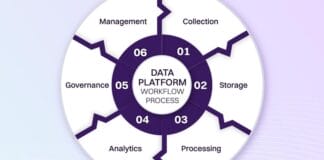Introduction to Data Centers
A data center is a dedicated facility housing computing and storage systems that manage, process, and store vast amounts of digital information. From cloud services to web hosting, data centers power the digital experiences we rely on every day. These facilities are critical to both public and private sector operations, ensuring high availability, performance, and data integrity.
What is a Google Data Center?
A Google Data Center is one of the world’s most advanced computing infrastructures, supporting Google’s vast ecosystem—from Search and Gmail to YouTube and Google Cloud. Built for scale, efficiency, and reliability, these centers are the backbone of Google’s global digital operations.
Google Data Centers are not just massive warehouses of servers—they are highly secure, energy-efficient, and engineered with cutting-edge technology to ensure minimal downtime and optimal performance. With an intense focus on innovation, Google continuously upgrades its data centers with custom-built hardware, AI-driven cooling systems, and advanced monitoring tools to ensure sustainability and seamless delivery of services to users around the globe.
Google Data Centers:
- Operate in over 20 locations worldwide
- Manage billions of user requests daily
- Host some of the most used platforms and services globally
Evolution of Google Data Centers
Initially built to support basic search functionalities, Google Data Centers have evolved significantly:
Google’s relentless commitment to innovation and performance has driven the evolution of its data centers. In the early 2000s, Google started with basic colocation models and custom server racks designed to support growing search demands.
By the mid-2000s, Google transitioned to modular and container-based architectures, allowing faster deployment, greater scalability, and improved energy management. This shift marked a turning point in how data centers could be built and operated with agility.
In recent years, Google has focused heavily on integrating artificial intelligence, real-time data processing, and sustainability into its data center strategy. These advancements have made Google a global leader in data center innovation, from using machine learning to optimize power usage to powering operations with 100% renewable energy.
- 2001–2006: Basic Colocation and Custom Racks
Google began with traditional colocation facilities and built custom server racks to support its rapidly expanding search infrastructure. - 2007–2012: Modular and Container-Based Architecture
To scale efficiently, Google adopted modular data centers housed in shipping containers. This allowed faster deployment, improved flexibility, and better space utilization. - 2013–Present: AI Optimization and Green Energy
Google integrated AI to enhance power usage efficiency and moved toward real-time data processing. A strong focus was placed on sustainability, with a commitment to using 100% renewable energy across its global data center fleet.
Google continuously upgrades its infrastructure to maintain leadership in cloud and digital services.
Hyper-Scale Architecture & Server Optimization
- Google designs data centers to support millions of servers, grouped in modular units for scalability.
- Custom server designs prioritize:
- Minimal energy consumption
- Reduced heat generation
- Compact form factors for higher density
- Minimal energy consumption
- Each server rack is optimized for efficient airflow and cooling, reducing operational costs.
AI-Driven Infrastructure Management
- Predictive maintenance: AI monitors server health to detect failures before they occur.
- Dynamic workload balancing: Traffic routing and load distribution are adjusted in real-time.
- Energy optimization: Machine learning algorithms predict usage patterns to reduce electricity consumption by up to 40%.
Cooling Innovations
- Liquid cooling systems: Direct-to-chip cooling reduces energy required for traditional air conditioning.
- AI-driven airflow management: Sensors track temperature across racks, adjusting cooling dynamically.
- Water reuse: Greywater and recycled water are used for evaporative cooling, reducing freshwater dependency.
Networking & Connectivity
- Google uses software-defined networking (SDN) to optimize global traffic flow.
- Private fiber optic network: Connects all data centers with ultra-low latency for high-speed data transfer.
- Redundant connections ensure 99.999% uptime, even in the event of a regional outage.
Storage & Data Management
- Proprietary systems like Colossus, Spanner, and Bigtable handle petabytes of data across continents.
- Features include:
- Automatic replication across regions
- Strong consistency guarantees (Spanner)
- Low-latency read/write for high-demand services
- Automatic replication across regions
- Supports real-time analytics for services like YouTube recommendations and Google Ads.
Security & Compliance at Scale
- Physical security: Biometric access, 24/7 surveillance, motion detection, and layered barriers.
- Data security: End-to-end encryption (in transit and at rest).
- Regulatory compliance: ISO 27001, SOC 2, PCI DSS, FedRAMP, GDPR, and local data laws.
- Incident response: Dedicated teams monitor anomalies and respond instantly to threats.
Sustainability and Carbon-Intelligent Computing
- Google matches energy usage with 100% renewable energy in most data centers.
- Advanced AI optimizes energy efficiency per workload, dynamically allocating resources.
- Google aims for 24/7 carbon-free energy by 2030.
- Waste reduction: IT equipment is refurbished or recycled, aiming for zero landfill contribution.
Global Distribution & Redundancy
- Data centers are geographically distributed to ensure business continuity.
- Redundant power, network, and cooling systems allow services to continue uninterrupted during failures.
- Edge data centers support low-latency access for time-sensitive applications like gaming or AR/VR.
Advanced Hardware & TPUs
- Tensor Processing Units (TPUs): Custom accelerators for deep learning and AI workloads.
- TPUs improve performance by orders of magnitude compared to GPUs for ML tasks.
Used in Google AI products like Translate, Bard, Photos, and Smart Compose.
Key Features of Google Data Centers
Google Data Centers are known for:
- Hyper-scale design: Engineered to support millions of servers
- Redundancy and uptime: Ensures 99.999% availability
- Energy efficiency: Uses custom cooling and AI to lower power consumption
- Automation: Self-healing networks and predictive maintenance systems
Global Infrastructure and Locations

Google has established a vast data center network across North America, South America, Europe, and Asia:
- U.S. locations: Iowa, South Carolina, Georgia, Oregon, and more
- Europe: Netherlands, Finland, Ireland, Belgium
- Asia-Pacific: Singapore, Taiwan
These locations are chosen for:
- Renewable energy availability
- Fiber optic connectivity
- Economic stability
- Geographic diversity
Technologies Powering Google Data Centers
Google’s data centers are some of the most technologically advanced in the world. Their ability to scale, perform complex computations, and serve billions of users simultaneously is driven by a combination of custom-built infrastructure and proprietary software innovations. Below are the core technologies that power Google’s massive digital operations:

TPUs (Tensor Processing Units) – Accelerating AI and Machine Learning
Tensor Processing Units (TPUs) are Google’s custom-developed application-specific integrated circuits (ASICs) optimized specifically for machine learning tasks. Designed to accelerate TensorFlow-based models, TPUs allow Google to process billions of AI computations per second.
- TPUs are used in image recognition, language translation, search optimization, and more.
- They outperform traditional GPUs and CPUs in deep learning workloads.
- TPUs are central to services like Google Translate, Google Photos, and Bard (Google’s AI assistant).
Software-Defined Networking (SDN) – Intelligent Network Optimization
SDN allows Google to control and optimize network traffic using software, instead of relying solely on physical networking hardware. This leads to:
- Dynamic traffic routing based on demand and latency.
- Scalable network infrastructure to adapt to growing global usage.
- Enhanced security, as SDN can isolate and manage traffic at the application level.
With SDN, Google ensures low-latency and high-availability for services like YouTube, Gmail, and Google Cloud.
Custom Hardware and Servers – Engineered for Speed & Efficiency
Rather than purchasing off-the-shelf equipment, Google designs and manufactures its own custom servers and components tailored for specific workloads.
- These machines are stripped of unnecessary parts to save energy.
- Each rack is optimized for cooling, power efficiency, and compactness.
- Google integrates custom CPUs, memory, and networking interfaces to match its unique software stack.
This custom approach enhances performance, reduces power usage, and lowers operational costs.
Proprietary Storage and Databases – Bigtable, Spanner, and Colossus
Google has developed its own high-performance storage and database systems to handle massive data volumes and ensure high availability.
- Bigtable: A distributed storage system for structured data, used in services like Google Maps and Gmail.
- Spanner: A globally-distributed relational database known for consistency, scalability, and high availability.
- Colossus: Google’s file system that supports redundancy, replication, and fast access for massive data storage.
Together, these platforms form the backbone of Google’s data processing capabilities, enabling real-time services and analytics at a global scale.
Sustainability and Environmental Commitments
Google is a global leader in sustainable computing:
- Carbon neutrality: Achieved since 2007
- 24/7 carbon-free energy: Goal to match energy use with renewable sources every hour
- Water reuse systems: Efficient data center cooling
- Zero waste to landfill: Reuse and recycle IT assets
Security and Compliance Measures
Security is integral to Google Data Center operations:
- Layered physical security: Biometric access, security guards, 24/7 surveillance
- Data encryption: Both in transit and at rest
- Compliance certifications: ISO 27001, SOC 2, PCI DSS, FedRAMP
- Incident response teams: Trained to handle breaches, disasters, or data threats
Real-World Impact and Use Cases
Google Data Centers support:
- Gmail: Over 1.5 billion users
- YouTube: Processes more than 500 hours of content per minute
- Google Cloud Platform (GCP): Serves enterprises globally
- Google Maps and Search: High-speed access and real-time updates
Their infrastructure supports education, healthcare, entertainment, and enterprise operations.
Future Trends in Data Center Architecture
As digital demands grow exponentially, data centers are transforming from static infrastructure to intelligent ecosystems. Future architectures will focus heavily on automation, sustainability, and decentralized processing.
With AI-driven systems managing workloads, energy usage, and predictive maintenance, data centers will become more self-sufficient and environmentally friendly. Moreover, the shift toward modular and scalable components will allow faster deployment and easier upgrades, positioning data centers as agile enablers of real-time services across industries.
Emerging developments in data center innovation include:
- Edge computing: Bringing processing closer to users
- AI-driven cooling: Reducing energy consumption
- Quantum computing: Pioneering next-gen processing power
- Hybrid cloud ecosystems: Seamless integration of public and private cloud
Conclusion
Google Data Centers exemplify modern infrastructure excellence. With advanced technology, sustainable operations, and global reach, they serve as a model for other organizations and cloud providers. As data demand grows, Google continues to redefine what a world-class data center looks like.
Beyond their technological superiority, Google Data Centers also embody a forward-thinking approach to energy efficiency and environmental stewardship. By integrating AI-powered cooling systems, renewable energy sources, and carbon-intelligent computing strategies, Google not only meets but often exceeds sustainability benchmarks.
These innovations not only reduce operational costs but also set new standards in green IT infrastructure, reinforcing Google’s commitment to building a more responsible digital future.
What is a data center?
A facility used to house computer systems and associated components for data storage and processing.
Where are Google Data Centers located?
Across the U.S., Europe, Asia-Pacific, and South America.
What makes Google Data Centers energy-efficient?
AI-powered cooling, renewable energy use, and water recycling systems.
Are Google Data Centers secure?
Yes, they use multi-layered physical and digital security protocols.
What technologies are used in Google Data Centers?
TPUs, software-defined networking, and proprietary storage systems.
Does Google have a data center in India?
Yes, Google does have a data center in India. In 2021, Google Cloud launched its Delhi-NCR region data center to expand its global cloud infrastructure and better serve Indian businesses and users. This facility helps reduce latency, enhances data residency, and supports the growing demand for cloud services in India.



